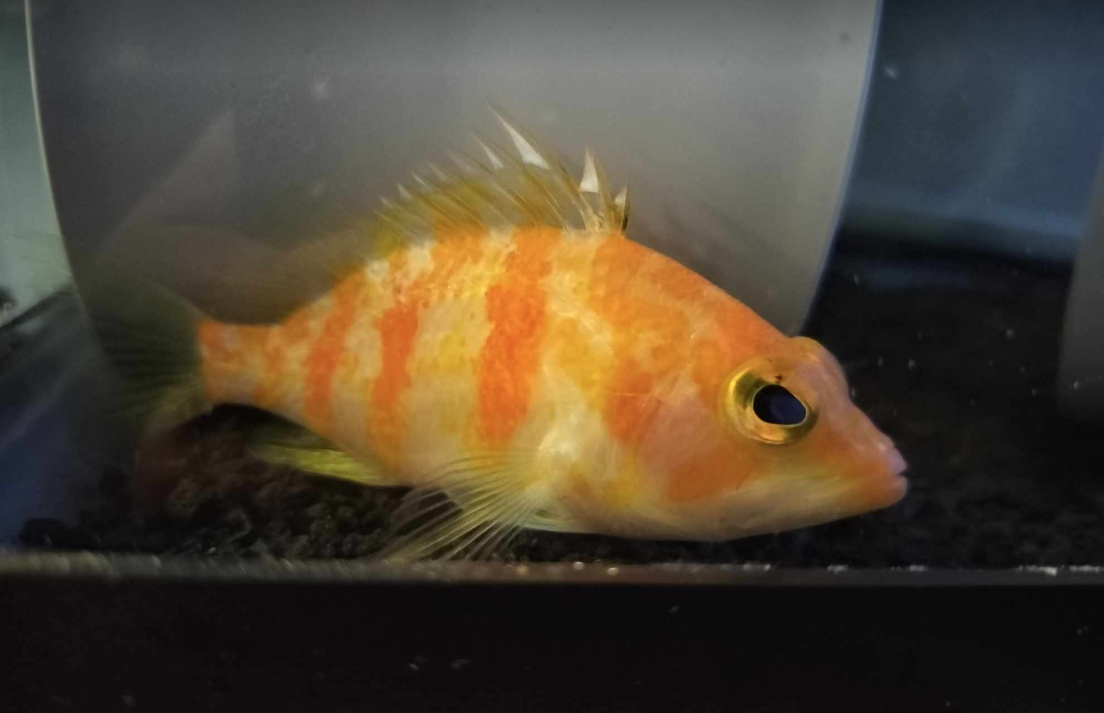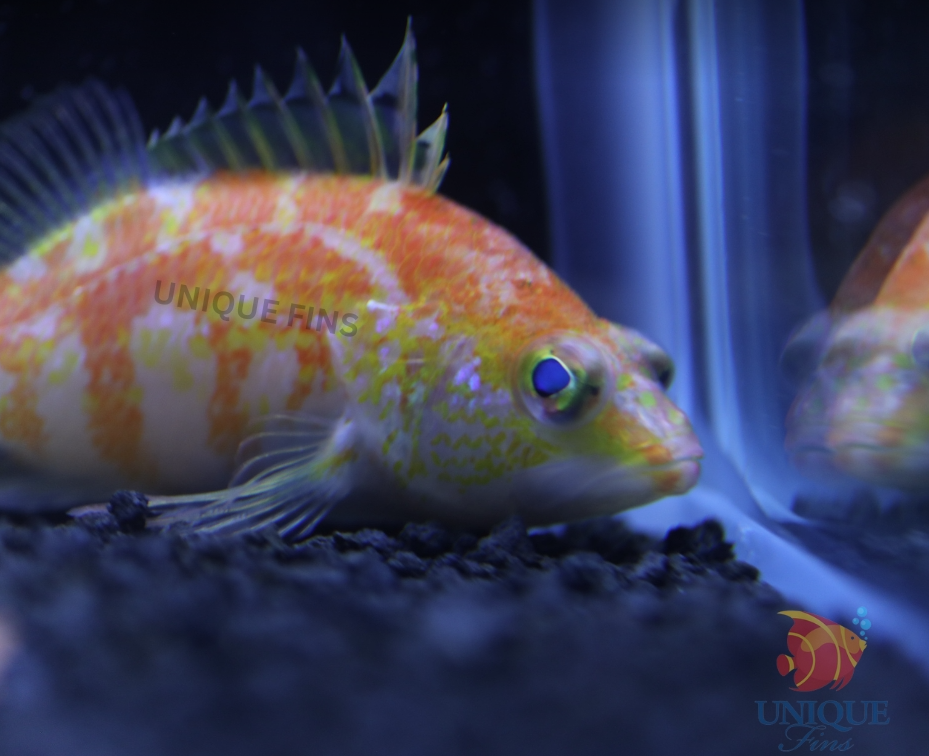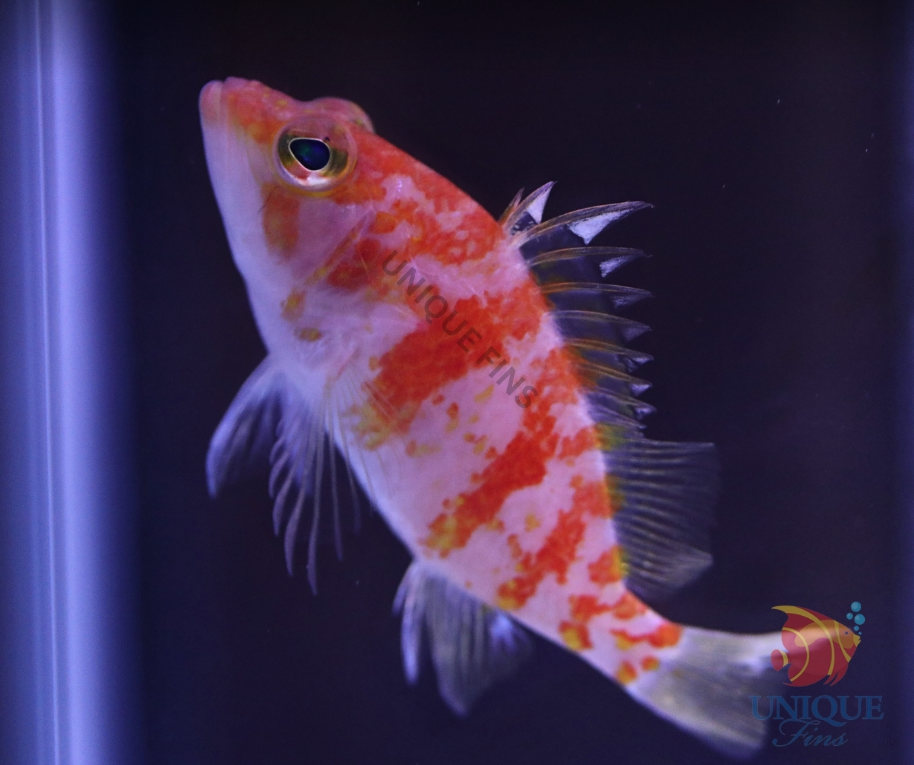Two rarely seen deepwater perchlets have been collected and exported from Southern Taiwan. Plectranthias maekawa was only described in 2018, based on three specimens collected from the Tokara Islands, Kagoshima, Southern Japan.
It inhabits the cool, low light, rariphotic waters (below the mesophotic zone at 400-1000’) where any corals are strictly non-photosynthetic, but where the fish species are more closely related to those at the surface, than to those at the deepest, darkest depths. The pictured specimen was imported by Unique Fins, where it is already accepting frozen krill, being kept at 70F/21C, but slowly being acclimated to higher light levels as we write this news.

As far as we know Maekawa’s basslet has only been available once before in 2012, when Blue Harbor imported one as the closely related Plectranthias helenae. Unique Fins imported a Spotted Perchlet, Plectranthias wheeleri at the same time, another very similar-looking rariphotic species that they are keeping in the same conditions as the maekawa. P.wheeleri also hails from Japan but makes it into high-end Japanese fish collector’s hands slightly more frequently.
Plectranthias
Plectranthias is a fascinating genus in the Serranidae family, and may be referred to as Basslets, Perchlets, or even Pixie Hawkfish. There are over 60 species, all small and predatory, many exhibiting beautiful red coloration (invisible in the depths,) with perchlike double dorsal fins and occasionally fin ray extensions.
Their behavior is similar to that of the Hawkfish, perching largely motionless throughout the day before bursting into action to consume small fish or shrimp. The most commonly seen species in the hobby is P.inermis, and we are big fans of the genus here at Reef Builders. We expect more species distribution data (and perhaps more new species to come to light,) as researchers further explore the sea’s Rariphotic Zones.

Unique Fins say that their two new imports are both 3” in length, and both are expected to sell for four-figure sums.



